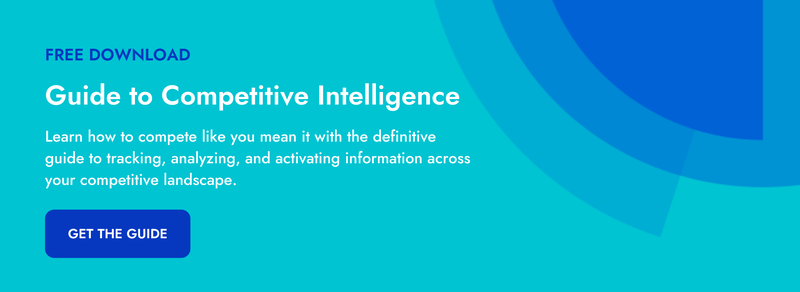So you’ve decided your old car is on life-support. It’s been a sweet ride, but you’re now shelling out mechanic fees that rival the monthly payments you’d make for a newer model. You start to shop around, but all those options – new vs. used, domestic vs. foreign, and sedan vs. SUV vs. minivan – are overwhelming.
As you start your research, you notice an article on car financing options. Interesting, but you’re not there just yet. So you scroll past the article in your quest to find reviews of this year’s models.
A Missed Connection
That financing article was no fluff piece. If you had read it, you would have learned how to save thousands of dollars by going to a local credit union instead of taking your car dealer’s financing package.
So why didn’t you click that link?
Simply put, that article was irrelevant to you at that point in your buyer’s journey. Informative and insightful, that same article would have earned your click if only you had been farther along on your journey. Unfortunately, at that moment you were too preoccupied with your next car’s looks, performance, fuel efficiency, and cool features to bother with it.
Get the Guide to Competitive Intelligence for Product Marketers
What is the Buyer’s Journey?
The buyer’s journey is a framework for understanding the path a customer makes in researching, evaluating, and making a purchasing decision. There’s no single model for the buyer’s journey. The specifics vary based on the product or service you’re offering. But in its simplest terms, the journey can be segmented into three stages: Awareness, Consideration, and Decision. And to connect with your customers, you need to offer information that’s relevant to them wherever they are on their journey.
What’s relevant will differ for those customers who’ve just realized they have a problem (e.g., they need a car), those who have narrowed their options to the top three candidates (say, Dodge, Chevy, and Toyota pickup trucks), and those poised to make their purchase.
Map Assets to Journey Stages
At any given time, you’ll have customers at each of these stages. That’s why it’s important to conceive and produce your content using a portfolio approach. To maximize your impact and marketing ROI, your portfolio needs to include messaging and collateral that meets your customers’ needs at each stage. A paid search campaign can cost-effectively capture mindshare among awareness-stage customers. To improve closing rates among decision-stage customers, webinars – more information-rich and personalized – can be more impactful.
There are lots of formulas for mapping your content in this way, but you can apply the model below to baseline your strategy.

Note that this model provides a high-level overview; you’ll want to define a model that applies uniquely to your product. Note too that the assets listed are merely illustrative; a blog post or case study may engage prospects at any of these three stages. Plus you’ll want to define your own stages; many models out there add another stage or two of granularity, for example.
Finally, business and technology landscapes evolve rapidly. Once you define your model, prepare to make adjustments.
As you align your topics and tactics with each stage, consider the engagement time required for each asset. Marketing convention holds that the deeper the prospect is in your funnel, the more likely they’ll read a 3-4 page document or commit to a 45-minute webinar.
Create Unique Content for Each Stage of the Buyer’s Journey
Once content has been mapped to each stage of the buyer’s journey, it is important to plan out what new materials you should be creating. To help with this, it is useful to understand the content landscape of your industry. With the right competitive intelligence, you can keep your finger on the pulse in terms of what content your customers are interacting with and any new pieces your competition has published.
This approach can be quite tactical. Consider how valuable it would be to know that competitors have just released a new whitepaper or scheduled an upcoming webinar. This could lead you to match this effort with a content piece of your own or focus on another, underrepresented stage of the buyer’s journey. Furthermore, understanding the channels where your competitors (or your own company) are being mentioned can indicate how customers consume content. Social media posts or product reviews can provide insight into topics to cover in upcoming content pieces that answer your audience’s questions.
Understand Your Customers to Drive Sales Success
Good marketing requires understanding your buyer and aligning your content and positioning efforts to their needs. Ask your customers what their biggest questions and concerns are at each stage, and what kinds of information and resources they seek out.
Remember, your job is to build relationships with your customers by serving up the information they need when they need it. Once you model your customers’ journeys, you’ll have a roadmap for marketing tactics and content that drive sales success.

Seeing is believing! Check out Crayon for yourself.
Take a Product TourRelated Blog Posts
Popular Posts
-
 The 8 Free Market Research Tools and Resources You Need to Know
The 8 Free Market Research Tools and Resources You Need to Know
-
 6 Competitive Advantage Examples From the Real World
6 Competitive Advantage Examples From the Real World
-
 How to Create a Competitive Matrix (Step-by-Step Guide With Examples + Free Templates)
How to Create a Competitive Matrix (Step-by-Step Guide With Examples + Free Templates)
-
 24 Questions to Consider for Your Next SWOT Analysis
24 Questions to Consider for Your Next SWOT Analysis
-
 How to Measure Product Launch Success: 12 KPIs You Should Be Tracking
How to Measure Product Launch Success: 12 KPIs You Should Be Tracking



